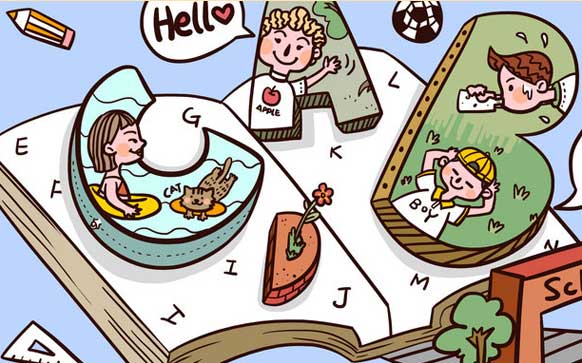Title: The Art of Laughing - English Expressions for Laughter
Laughter is one of the most universal forms of communication, a powerful tool that can bring joy and connection to people from all corners of the globe. In the realm of English, understanding how laughter is expressed in this language is not only essential for everyday conversation but also crucial for those wishing to communicate effectively with non-native speakers or international audiences. This article aims to explore the various ways in which laughter in English is expressed, providing insights into its linguistic nuances and cultural implications.
1.The Basics
- Laughter Sounds: Laughter in English typically has three sounds—a high-pitched "chuckle," a medium-pitched "ha-ha," and a low-pitched "hah." These are often used in isolation, but they can be combined to create even more varied expressions.
2.Identifying Laughter
- Contextual Cues: It is essential to understand context clues when trying to identify laughter in conversation. For example, someone might chuckle while saying something amusing, or they might laugh at an unexpected turn of events. Pay attention to body language, tone, and other verbal cues as well.
3.Common Phrases
- "Laughing Loudly": This phrase indicates that the person is laughing out loud, often accompanied by a visible smile or raised eyebrows.
- "I'm in stitches": This is a colloquial way of saying that you are laughing so hard it hurts. It's often used in situations where someone is extremely amused or shocked by something unexpected.
- "Ha ha!": This is a simple exclamation of amusement or surprise, often used when expressing agreement or approval.
4.Laughter and Emotions
- Joy and Happiness: When someone laughs in response to something joyous or uplifting, it conveys happiness and positive energy.
- Sadness and Sadness: Laughter can also express sadness or sorrow, especially when someone is reflecting on their past experiences or feeling empathy for others.
- Excitement and Surprise: Laughing can signal excitement or shock at unexpected events or developments in conversation.
5.Cultural Differences
- American vs British: While both cultures value humor, there are some differences in the way laughter is perceived and expressed. Americans tend to use a wider variety of expressions and can be more open about expressing emotions, while British speakers may be more reserved and prefer to keep their emotions internalized.
6.Practical Tips
- Listening Attentively: Pay attention to the speaker's tone, volume, and pauses when identifying laughter. These cues can help you gauge the appropriate response.
- Politeness and Sensitivity: When expressing appreciation for someone's laughter, it's polite to compliment the sound itself rather than the person who made it. For example, you could say "You have such a good laugh!" rather than "You're funny."
7.Expanding Your Repertoire
- Practice Makes Perfect: To truly master the art of laughter and its expression in English, practice speaking with native speakers or engaging in role-playing exercises. This will help you refine your understanding of different accents and dialects.
In conclusion, laughing in English is not just a fleeting expression but a profound communicative tool that can bridge gaps, foster relationships, and create lasting memories. By exploring the various aspects of laughter in English, we gain insight into the nuances of language use and cultural contexts, ultimately enriching our ability to communicate effectively in this global society. Remember, the key to expressing laughter authentically lies in listening carefully, being sensitive to cultural norms, and practicing with patience and dedication.
未经允许不得转载:» laugh 英语怎么读("Laugh English pronunciation")

 家长点评网
家长点评网











